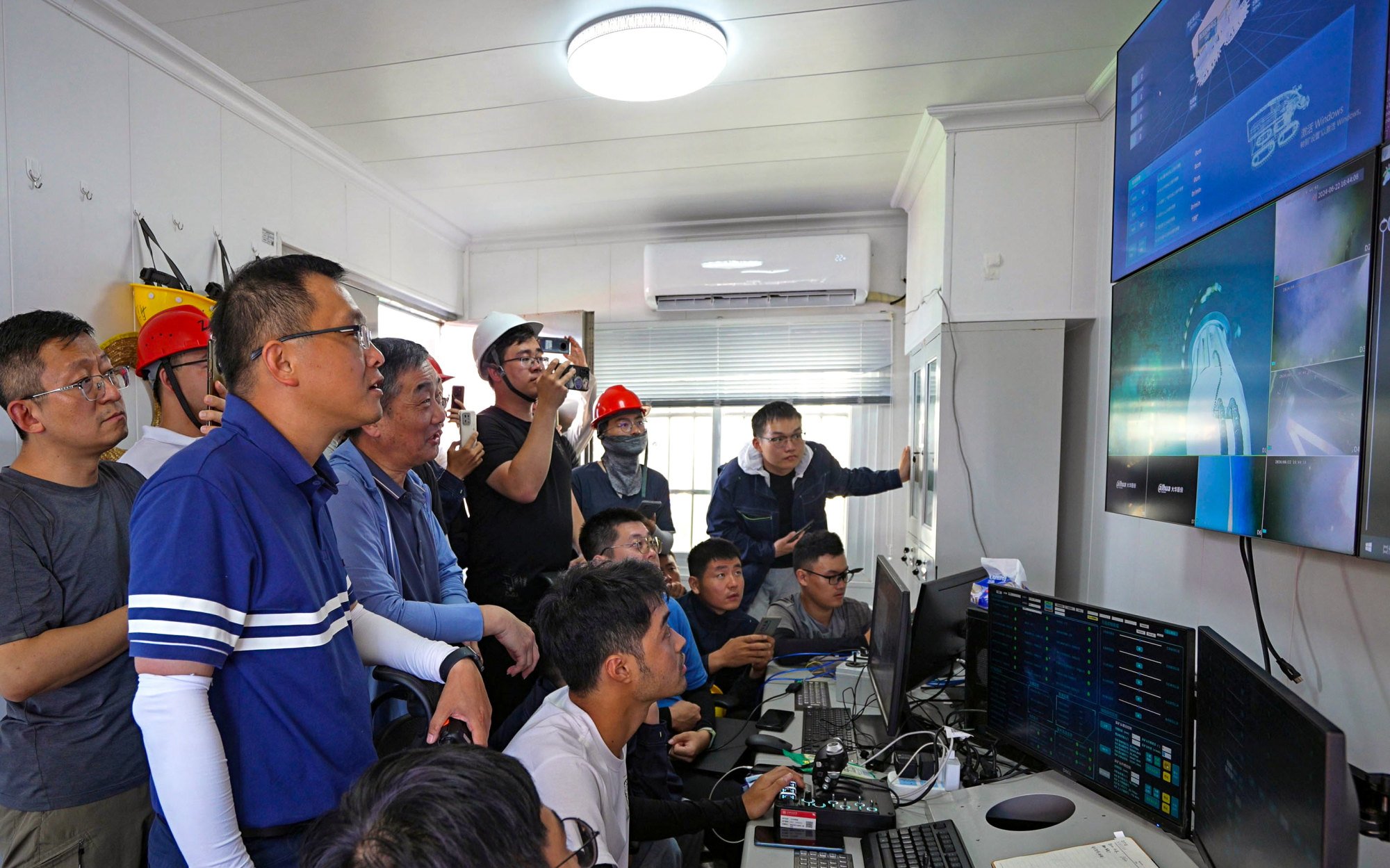A Chinese deep-sea mining vehicle has successfully completed sea trials, moving a step closer to extracting minerals from the ocean floor.
The prototype, called Kaituo 2, was developed by Shanghai Jiao Tong University and has undergone five test dives, the Shanghai municipal government said on Tuesday.
The deepest was conducted in the western Pacific, where the vehicle reached a depth of 4,102.8 metres (13,460.6ft), a national record.
Kaituo 2 is designed to operate at a maximum depth of 6,000 metres. That would put the ocean floor of the entire South China Sea within reach, since its average depth is 1,212 metres and the deepest is 5,559 metres.

“The vehicle must not only navigate freely through the rugged underwater terrain and complex sea conditions but also efficiently mine and collect resources and recover effectively,” project leader Yang Jianmin was quoted as saying in a report on the university’s website.
“That led to three major technical challenges that have long plagued international deep-sea mining: navigating complex seabed terrain, extracting diverse mineral forms efficiently, and safely managing heavy equipment in rough sea conditions,” said Yang, a professor at SJTU’s School of Ocean and Civil Engineering.
The Kaituo 2 looks a bit like a tank, with four tracks and a drill at the front. It has a collection system and ore storage in the middle, and an umbilical cable connecting it to the surface.
It is 6 metres long, 3 metres wide and 2½ metres high, and weighs about 14 tonnes.
The mining vehicle operates autonomously once it is on the ocean floor, adjusting its tracks to the seabed terrain without human intervention, according to the SJTU report.
During the trials, Kaituo 2 navigated steep underwater mountains over 30 degrees and rugged terrain, cutting and collecting various types of seabed minerals.
The report said it collected more than 200kg (441lbs) of minerals rich in copper, cobalt, nickel and manganese, all of which are critical minerals used in everything from technology to defence and medicine.

The mining vehicle’s advanced technologies – such as intelligent path planning, tracking and obstacle avoidance – were also put to the test during the trials, along with an environmental monitoring system.
Yang’s team has been focused on developing deep-sea mining equipment since 2013. Their earlier prototype vehicle, Kaituo 1, reached a depth of 1,305 metres during trials in 2021.
While seabed mining is not yet happening at a commercial scale, activities are intensifying globally as deep-sea minerals become a new battleground for national resource competition.
For example, Japan collected 649kg of cobalt- and nickel-rich crust at a depth of 1,600 metres in 2020.
The following year, Belgium’s Global Sea Mineral Resources and the Indian National Institute of Ocean Technology put deep-sea mining vehicles to the test at depths of 4,500 metres and 5,270 metres, respectively.
In 2022, Canada’s The Metals Company carried out seabed mineral collection, transport and surface system tests at a depth of 4,400 metres.
The Cook Islands and Japan are currently conducting deep-sea mineral exploration within their national jurisdictions. And in January, Norway’s parliament voted to allow deep-sea mining in the Norwegian Sea.

The environmental impact of extracting minerals from the ocean floor remains controversial.
Greenpeace outlined the potential problems – from chemical pollution to noise, vibrations and light – in a report released in May.
“In the dark ecosystems of the deep sea, chemical pollution caused by mining may be deadly to bottom-dwelling creatures,” the report said.
“The mining activities also create a lot of floating debris that can cloud the water for a long time, suffocating marine life.
“Additionally, the noise, vibrations and light from mining can disturb the behaviours and communication of marine mammals.”


